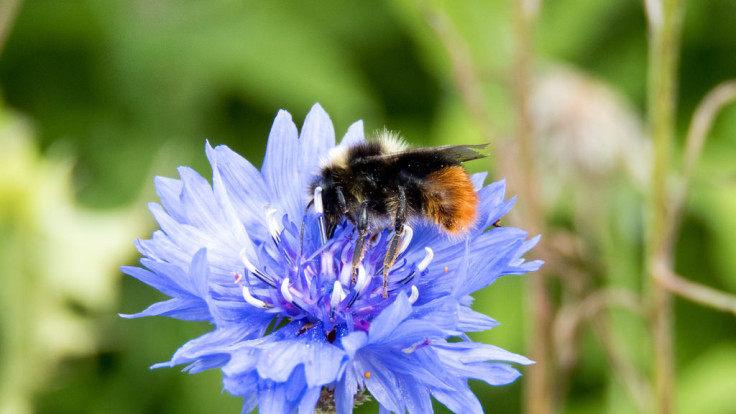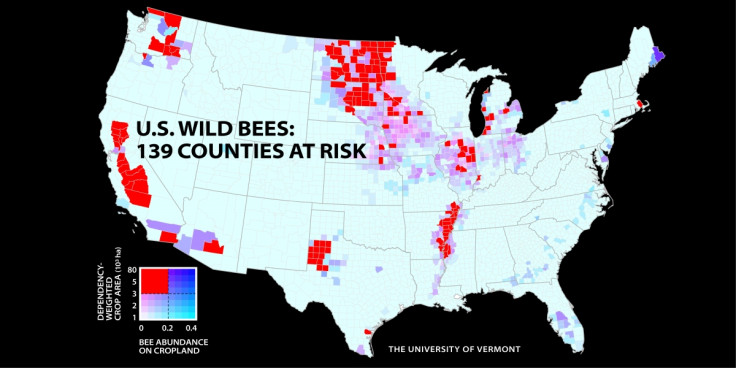Wild bee numbers have fallen across 23% of the US as map reveals 'hotspots' at greatest risk

Scientists have mapped the decline of wild bees in the US for the first time, and 139 counties across the country have a mismatch between the falling number of bees, and a rising need to supply crop pollinators.
The study shows that between 2008 and 2013, wild bee populations declined in 23% of the contiguous United States – all 48 states minus Alaska and Hawai'i. It was also found that 39% of croplands that rely on bees for pollination, will struggle to survive with the declining numbers.
Insu Koh, researcher at the University of Vermont said: "We can now predict which areas are suffering the biggest declines of wild bee abundance, and identify those areas, with low bee supply and high bee demand that are the top priority for conservation."
The researchers mapped the 139 counties at risk, and also the wild bee abundance across the country. The results showed that key agricultural counties in California, the Pacific Northwest and the southern Mississippi River valley have the biggest mismatch between bee populations and agricultural demand.
The results, published in Proceedings of the National Academy of Sciences, also show a strong link between areas of crops which rely heavily on pollinators, and areas of declining wild bee abundance. Examples of these crops include watermelons, peaches, apples and plums.


"Now we have a map of the hotspots," said Koh. "It's the first spatial portrait of pollinator status and impacts in the U.S."
This study follows President Barack Obama's call for an assessment on the country's pollinators in June 2014. The Presidential memorandum said: "over the past few decades, there has been a significant loss of pollinators, including honey bees, native bees, birds, bats, and butterflies."
The study used federal land databases to identify 45 different types of land-use, including the all-important croplands and natural habitats. They combined that information with data from 14 bee ecology experts on how valuable each type of land use is to wild bees for their natural habitats.
The resulting combination of information allowed the scientists to create the two maps, which were tested against field observations for accuracy. The researchers believe the map can help scientists with future research.
The U.S. honeybee population has declined by as much as half since 1947, according to the US Department of Agriculture. The total population decline is more than the combined human populations of UK cities Birmingham, Glasgow, Liverpool and Southampton.
© Copyright IBTimes 2025. All rights reserved.






















